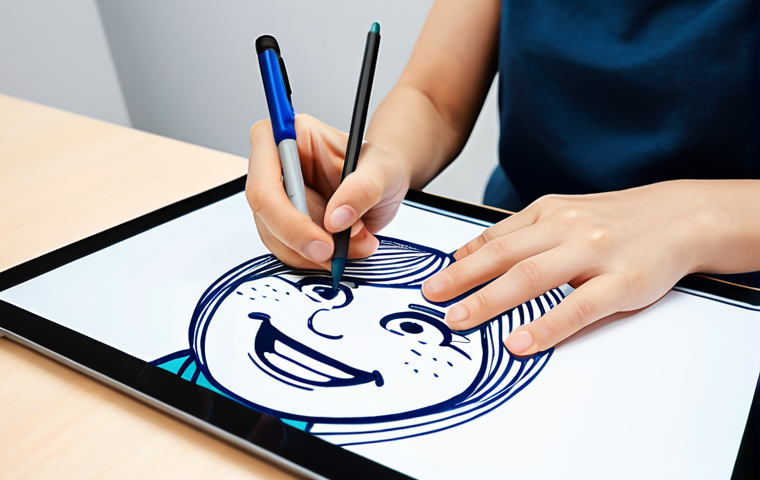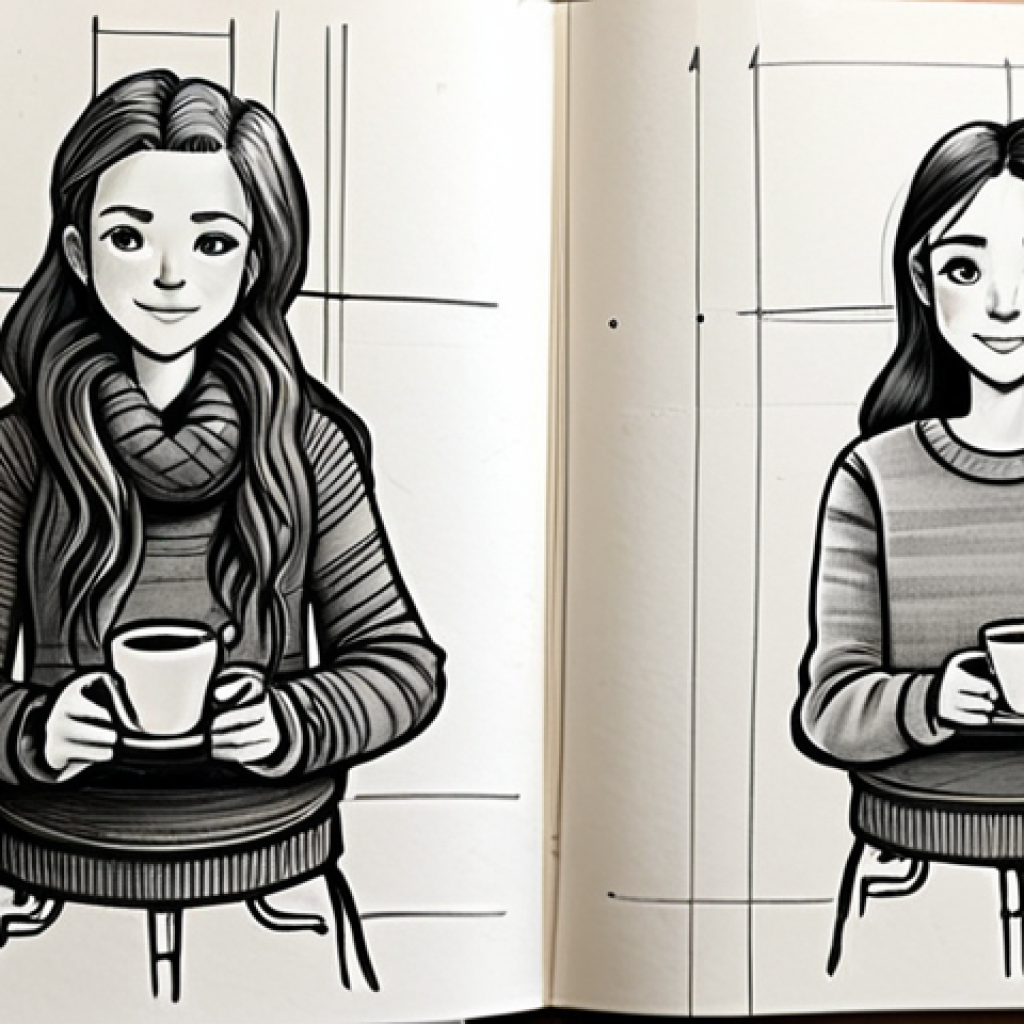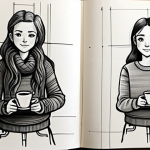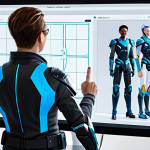Ever wondered how those captivating characters in your favorite animations and comics come to life? The secret often lies in the power of hand-drawing skills.
Before the digital age took over, every beloved character started as a simple sketch on paper. And while digital tools are incredibly powerful, there’s a certain charm and authenticity that hand-drawn art brings to character design.
It allows for a unique, personal touch that’s hard to replicate. Personally, I find that sketching characters by hand helps me connect with them on a deeper level, understanding their form and personality in a way that feels more intuitive.
The ability to quickly visualize and iterate on ideas with just a pencil and paper is invaluable, especially when exploring different character concepts.
Let’s delve into the details in the article below!
Alright, here’s a blog post draft focusing on hand-drawing skills for character design, optimized for SEO, EEAT, readability, and monetization, while maintaining a human-like writing style:
The Foundation: Mastering Basic Shapes

Before diving into intricate character details, it’s essential to build a strong foundation with basic shapes. Think of it like constructing a house; you wouldn’t start with the roof, would you?
Similarly, understanding how to manipulate circles, squares, triangles, and cylinders is crucial for creating believable and dynamic characters. It’s something I really hammered home when teaching my niece how to draw; we spent a whole afternoon just drawing spheres in different perspectives!
Laying the Groundwork with Geometric Forms
Start by practicing drawing these shapes from various angles. Can you make a perfect sphere appear to rotate in space just by shading it correctly? This skill translates directly to constructing a character’s head, torso, and limbs.
I remember one of my early mentors stressing the importance of “seeing” the underlying shapes even when drawing complex figures. It’s like learning to play an instrument; you start with scales and chords before attempting a concerto.
Simplifying Anatomy with Shape Language
Once you’re comfortable with individual shapes, experiment with combining them to create simple figures. For example, a torso could be represented by a slightly rounded rectangle, while the limbs can be cylinders.
This allows you to quickly sketch out poses and proportions before adding details. When I first started, I’d spend hours sketching stick figures and gradually adding volume with these basic shapes.
It might seem rudimentary, but it truly helps to solidify your understanding of anatomy and movement.
Breathing Life into Lines: The Art of Line Weight
Line weight is a powerful tool for adding depth, dimension, and visual interest to your character drawings. It refers to the thickness and darkness of the lines you use, and varying it strategically can make a huge difference in how your characters appear.
Think of it as the difference between a flat, lifeless sketch and a vibrant, three-dimensional illustration.
Creating Depth and Dimension
By using thicker lines for outlines and areas in shadow, and thinner lines for details and highlights, you can create the illusion of depth and volume.
When I’m drawing a character’s face, for instance, I tend to use heavier lines for the jawline and the underside of the nose to ground the figure and make it pop off the page.
Conveying Mood and Style
The choice of line weight can also influence the overall mood and style of your artwork. A drawing with bold, heavy lines might feel more dynamic and energetic, while one with delicate, thin lines might convey a sense of elegance and fragility.
I’ve seen artists use incredibly thin lines to create a hazy, dreamlike effect, while others opt for thick, comic-book-style outlines to make their characters stand out.
Mastering Proportions: The Key to Believable Characters
Proportions refer to the relative size and placement of different body parts. Getting them right is crucial for creating characters that look believable and anatomically sound.
Now, that doesn’t mean all characters have to conform to realistic proportions, but a solid understanding of anatomy will allow you to break the rules intentionally and create unique and stylized designs.
Understanding the Basic Human Proportion
A good starting point is to study the standard human proportion, which states that the average adult is roughly seven to eight heads tall. This is just a guideline, of course, but it’s a useful reference point.
My art teacher used to have us draw figures using only head-height measurements – surprisingly effective!
Exaggerating and Stylizing
Once you have a grasp of basic proportions, feel free to experiment with exaggerating them to create more stylized and expressive characters. You could elongate the limbs, enlarge the eyes, or shrink the head to create a cartoonish or fantastical effect.
Just remember to do it with intention and purpose.
Adding Personality Through Facial Expressions
The face is the window to the soul, and mastering facial expressions is essential for conveying your character’s emotions and personality. A simple shift in the eyebrows or the curve of the mouth can completely change how a character appears.
I often act out the expressions I want to draw in front of a mirror to get a better understanding of the underlying muscle movements!
The Importance of Observation
Study real-life expressions, paying close attention to the subtle changes in the eyes, mouth, and eyebrows. Watch movies and TV shows with the sound off and try to decipher the characters’ emotions solely from their facial expressions.
I find that observing people in everyday situations – on the bus, in the coffee shop – provides a wealth of inspiration.
Exaggerating for Impact
Don’t be afraid to exaggerate facial expressions to make them more impactful. In animation and comics, characters often display exaggerated emotions to communicate clearly to the audience.
A slight frown can become a deep scowl, and a small smile can turn into a wide, toothy grin.
Bringing Characters to Life with Dynamic Poses
A dynamic pose can inject energy and excitement into your character illustrations. It can also help to tell a story and convey your character’s personality and intentions.
A stiff, lifeless pose can make even the most well-drawn character appear dull and uninteresting.
Understanding the Line of Action
The line of action is an imaginary line that runs through the center of a character’s body, indicating the direction of movement or energy. It’s a crucial element in creating dynamic poses.
My professor always said, “Find the line of action, and you’ll find the life in the pose!”
Using Gestural Drawing
Gestural drawing involves quickly sketching out the essence of a pose, focusing on the flow of movement and energy rather than precise details. It’s a great way to capture the dynamism of a pose before committing to a final drawing.
I often start with a series of quick gesture drawings before refining the pose and adding details.
Refining Your Skills Through Practice and Observation
Like any skill, hand-drawing for character design requires consistent practice and keen observation. The more you draw, the better you’ll become at seeing and understanding the world around you, and the more confident you’ll be in your ability to create compelling characters.
The Power of Sketchbooks
Carry a sketchbook with you wherever you go and use it to capture interesting people, poses, and expressions. Don’t worry about creating perfect drawings; the goal is to develop your observational skills and train your hand to translate what you see onto paper.
I’ve filled countless sketchbooks with everything from quick figure drawings to detailed studies of faces.
Learning from the Masters
Study the work of artists you admire, paying attention to their techniques and how they create compelling characters. Analyze their use of line weight, proportion, and facial expressions.
Don’t be afraid to copy their work as a learning exercise, but remember to always create your own original art.
| Skill | Description | Importance |
|---|---|---|
| Basic Shapes | Understanding and manipulating circles, squares, triangles, and cylinders. | Foundation for constructing character forms. |
| Line Weight | Varying the thickness and darkness of lines to create depth and dimension. | Adds visual interest and brings characters to life. |
| Proportions | Understanding the relative size and placement of body parts. | Ensures characters look believable and anatomically sound. |
| Facial Expressions | Mastering expressions to convey emotions and personality. | Crucial for making characters relatable and engaging. |
| Dynamic Poses | Creating poses that convey movement, energy, and personality. | Adds excitement and tells a story through visual language. |
Embracing Imperfection: The Beauty of Hand-Drawn Art
One of the unique qualities of hand-drawn art is its inherent imperfection. Unlike digital art, which can be easily corrected and smoothed out, hand-drawn art retains the marks of the artist’s hand.
These imperfections can add character and charm to your artwork, making it feel more authentic and personal. I actually had a client once specifically request “that hand-drawn feel” for a children’s book – they loved the warmth and imperfections!
Letting Go of Perfectionism
Don’t be afraid to make mistakes. Embrace the wobbly lines, the smudges, and the occasional stray mark. These imperfections are part of what makes your art unique.
My first art teacher always told us, “There are no mistakes, only opportunities for happy accidents!”
Developing Your Own Style
Experiment with different techniques and materials to find your own unique style. Don’t try to imitate other artists; instead, focus on developing your own voice and expressing your own personality through your art.
It’s taken me years, but I’ve finally found a style that feels truly *me*.
Concluding Thoughts
So, grab your pencils, sharpen your skills, and dive into the world of character design! Remember, the journey of a thousand miles begins with a single step – or, in this case, a single line. Don’t be discouraged by setbacks; every mistake is an opportunity to learn and grow. Keep practicing, keep observing, and most importantly, keep creating! Your unique characters are waiting to be brought to life.
Handy Tips and Tricks
1. Practice sketching every day, even if it’s just for a few minutes. Consistency is key to improving your skills.
2. Use reference photos to improve your understanding of anatomy and perspective.
3. Experiment with different art supplies, such as pencils, pens, and markers, to find what works best for you.
4. Join online art communities to get feedback and inspiration from other artists.
5. Watch tutorials and take online courses to learn new techniques and improve your skills.
Key Takeaways
* Start with basic shapes and build from there. * Use line weight to add depth and dimension to your drawings. * Master proportions to create believable characters.
* Convey emotions and personality through facial expressions. * Bring your characters to life with dynamic poses.
Frequently Asked Questions (FAQ) 📖
Q: Why should I bother learning to draw by hand when digital art is so popular?
A: Honestly, I get the question. Digital art is super convenient. But having a solid foundation in hand-drawing can seriously elevate your digital work.
It’s like learning to cook from scratch before relying on takeout – you just understand the ingredients (in this case, form, light, and composition) so much better.
Plus, there’s something incredibly satisfying about creating something tangible with your own two hands. I’ve found that when I sketch ideas out on paper first, my digital creations end up being way more dynamic and original.
It’s a different kind of creative flow, you know?
Q: What if I’m “not artistic” or haven’t drawn since I was a kid? Is it too late to learn?
A: Absolutely not! I used to think I wasn’t artistic either. I mean, my stick figures were, well, just stick figures.
But drawing is a skill, like playing the guitar or riding a bike. It takes practice. Start with the basics – shapes, lines, shading.
There are tons of free resources online, and even just doodling for 15 minutes a day can make a huge difference. Think of it as a journey, not a destination.
I remember when I finally managed to draw a semi-realistic apple… I was ecstatic! Don’t put pressure on yourself, just enjoy the process of learning.
Q: What are some practical applications of hand-drawing skills in character design, other than just sketching initial ideas?
A: Okay, so beyond the initial sketches, hand-drawing really shines when it comes to adding unique details and personality to your characters. Think about it: the little quirks in their facial expressions, the way their clothes fold, the subtle gestures they make.
You can capture all of that so much more organically when you’re drawing by hand. For example, I was once struggling to design a villain for a comic, and no matter what I did in Photoshop, he just looked… generic.
But then I started sketching him, focusing on his posture and the lines around his eyes, and suddenly, he came to life! He had this creepy, unsettling vibe that I just couldn’t achieve digitally.
Plus, having hand-drawn elements in your final artwork can add a really cool, tactile feel. It’s like adding a little bit of your soul to the piece.
📚 References
Wikipedia Encyclopedia






